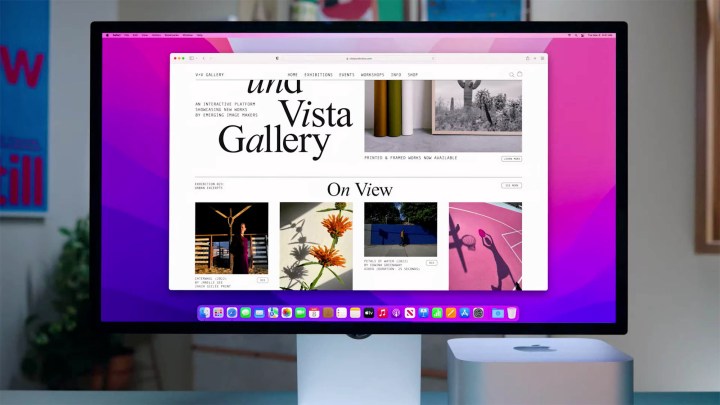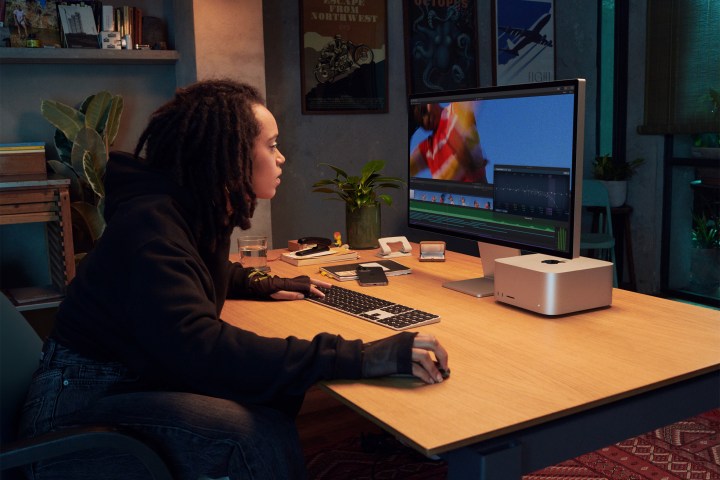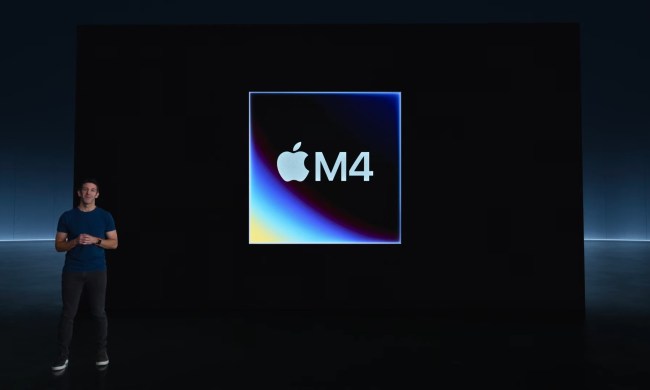Apple has unleashed a flurry of new products during the Peek Performance event, and among them was its second-ever external display: The Studio Display. The monitor arrives as a successor to the Pro Display XDR.
With a 5K Retina display, the new Apple screen comes with a host of impressive specifications, but how does it compare to its predecessor? Let’s analyze the two Apple displays in a Studio Display vs. Pro Display XDR battle.

Pricing and availability
The Studio Display is a new product and is not yet readily available, but we’re almost there. You can purchase the monitor right now and it will be up for grabs on March 18. Pro Display XDR is not quite that new anymore, having been released at the end of 2019.
The Pro Display XDR had a much higher initial price tag than the Studio Display, and the price has not gone down since. Both the monitors are available in more than one variant that can bring up the price.
There is a massive gap in the pricing of these two displays, but it’s not exactly clear whether Apple is hoping for the Studio Display to take the same place in its lineup as the Pro Display XDR. Both of these
The upgrades that cost extra include a height-and-swivel mount for the Studio Display, which brings up the price by an extra $400 and adds height adjustment to the 30-degree swivel the monitor offers in its base configuration. Apple also mentioned that you can pay extra to receive nano-texture coating on your monitor, but is yet to disclose the price.
The Pro Display XDR can be bought with standard glass for $4,999, but if you want nano-texture glass, you’ll have to pay $5,999. The Pro Stand and the VESA Mount Adapter are both sold separately regardless of the price point and cost $999.

Specs
The Studio Display is a 27-inch 5K Retina display with a 5120 x 2880 resolution and a pixel density of 218 pixels per inch. It offers up to 600 nits of brightness and supports 1 billion colors.
Apple clearly prioritized the speakers on its new monitor, which is not something that many of the best monitors tend to offer — the speaker quality has a tendency to be quite poor. The Studio Display comes with six speakers, including four force-canceling woofers that help improve the bass and two tweeters that amplify the mid and high tones. The speakers are all routed separately, offering Dolby Atmos virtual
The speakers are topped off by three microphones — perfect for video calls — that should deliver adequate voice call performance thanks to the way they were built. The entire audio system is based on the Apple A13 Bionic chip that we’ve previously seen in the
The Studio Display also comes with a built-in 12-megapixel ultrawide camera. This is the same model as in the freshly announced iPad Air 5. The monitor offers support for Apple Center Stage, which automatically tracks you and places you in the center of the shot, further improving video calls.
Although the Studio Display is impressive, its predecessor offers some upgrades over the latest Apple monitor. The Pro Display XDR is a 6K Retina display, measuring at 32-inches, with an IPS LCD panel that employs oxide TFT technology. It has a 6016 x 3384 resolution for a 16:9 aspect ratio and offers 218 pixels per inch.
The Pro Display offers a stunning level of brightness, peaking at around 1,600 nits and sustaining 1,000 nits at its base level, all thanks to the 576 blue LEDs that are found within the screen. Apple promises a 1,000,000:1 contrast ratio, and at the time of its release, was marketed by Apple as the best display for professionals in the world.
Unlike the new Studio Display, the Pro Display XDR does not come with a built-in webcam. It also lacks speakers and a microphone. In that regard, the Studio Display is a clear upgrade, offering all of these features without the need to buy an external webcam.

Design
Both the displays look quite similar and sport a very Mac-like minimalistic style, mixing muted shades of black, white, and silver.
The Studio Display has a distinct Apple-like design with a thick stand. The bezels surrounding the screen aren’t particularly thin, but they’re not bulky enough to be obtrusive. The Pro Display XDR seems to have slightly thinner bezels, but it’s hard to tell without seeing both the
The two screens look much different from the back. The Pro Display XDR has a dotted surface that resembles the Mac Pro, while the Studio Display has a smooth screen with Thunderbolt ports in the back.
As mentioned above, the stand for the Pro Display XDR was sold separately at a staggering $999 price. However, the Studio Displays comes with a stand right from the get-go.
Image quality
As the Studio Display is still unreleased, all we have to go on are the specifications of the two
The Pro Display XDR is certainly brighter than the Studio Display, with a base of 1,000 nits that can go up as high as 1,600, while the Studio Display offers 600 nits. However, not everyone may need the full 1,600 nits, and 600 nits still place the Studio Display high up on any best-monitor roundup.
The Pro Display XDR is a larger display, measuring 32 inches compared to the 27 of the Studio Display. It also offers a higher resolution and is a 6K Retina screen instead of the 5K on the Studio Display. Both the displays have a 50-60Hz adjustable refresh rate.
Whether the Pro Display XDR delivers better image performance than the Studio Display remains to be seen, but it’s safe to say that both of these

Ports
The Studio Display comes with a single upstream
The Pro Display XDR has a similar port lineup to the Studio Display, with one
It’s hard to pick a winner
Picking a winner is difficult because it’s unclear whether Apple even wants to put these two
The upcoming Studio Display is a gorgeous, enthusiast-grade monitor that packs a lot of punch while keeping the price relatively reasonable. Apple’s first external monitor, the Pro Display XDR, is extremely pricey, hitting over $6,000 in some configurations. However, it may offer superior image quality to the new Studio Display, and the Studio Display is not without its problems.
Ultimately, considering the steep price point of the XDR, it’s easy to recommend the Studio Display as a very good alternative that saves you a few thousand dollars. However, professionals may still opt to buy the expensive Pro Display XDR if it suits their needs better than the new Studio Display.



